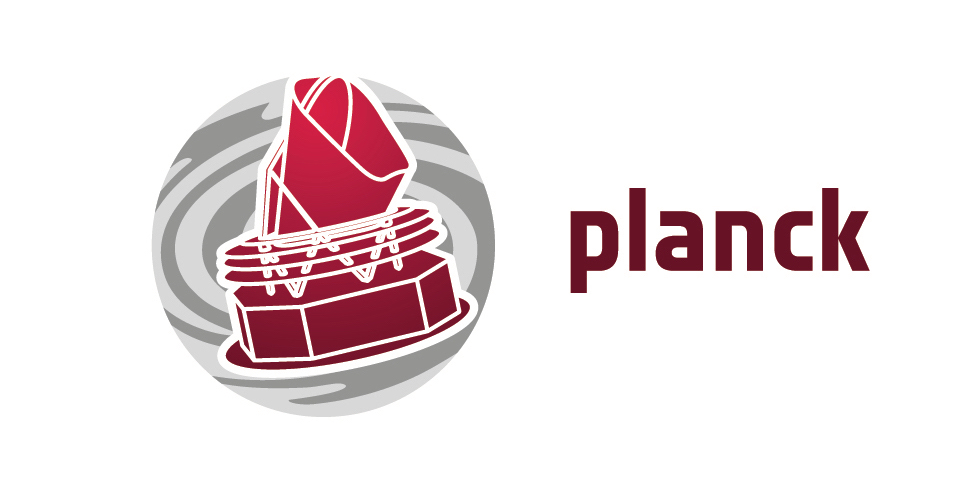
New Planck Cosmology products released in the Planck Legacy Archive
This long-time awaited release provides updated cosmological parameters, together with the likelihood code and other associated products.
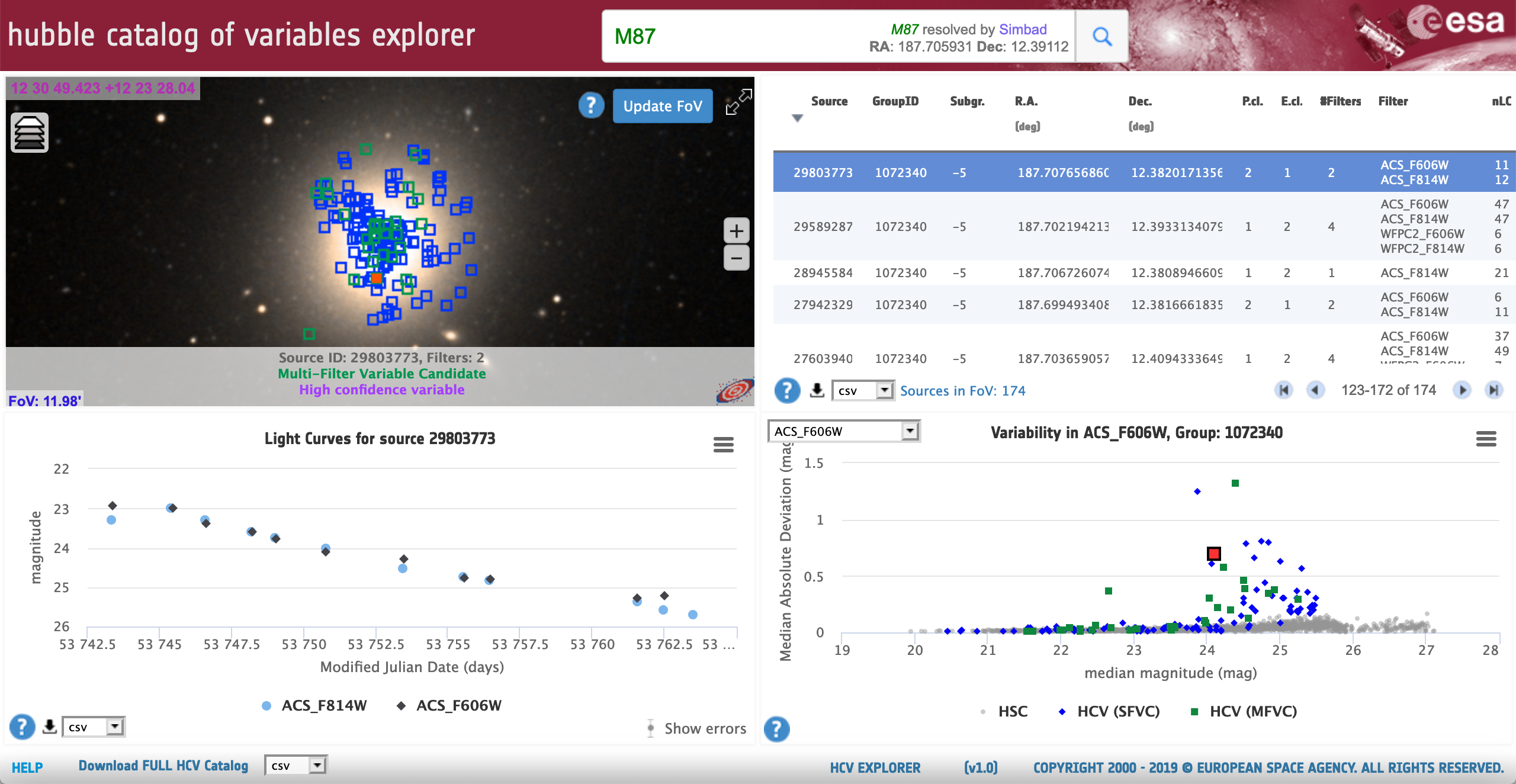
The HCV Explorer is a new online web tool
to access and visualise the time-series data from the Hubble Catalog of Variables (HCV).
Developed by the ESAC Science Data Centre (ESDC), the tool offers interactive and connected exploration of the HCV
with the aim of aiding the exploration of the catalogue, as well as enhancing data discovery and user experience through visual exploration.
The first version of the HCV Explorer was released, together with the first version of the catalogue, on September 24,
in an event held at ESAC with presence of ESA's HST members and representatives of the HCV team and the Hubble Source Catalog team.
This first release allows users to search by target name or coordinates and discover the variable sources around the target in the sky.
The results are connected to plots, showing the available light curves for each variable source,
or representing the significance of the variability of the source and its associated neighbors,
along with tabular results and data download functionalities.
For example, users can search for any object or region of choice and very quickly identify the single and multi-filter variable candidates,
plot their light curves and download the data with just a few clicks.
The results table provides column sorting, allowing users to, for example, sort by expert classification
and quickly identify high confidence variables, probable variables, possible artifacts,
and any candidate variables that have not yet been classified by experts and could be interesting to follow up.
The download of the entire catalog, along with all light curves, is also available from the HCV Explorer,
as well as from the European Hubble Science Archive (EHST) at ESAC
and the Mikulski Archive for Space Telescopes (MAST) at the Space Telescope Science Institute (STScI).
The catalogue is also available via the IVOA Table Access Protocol (TAP), which allows users to access the catalog programmatically in a number of ways:
via an astropy module; via the command line; or via tools such as TOPCAT.
All details, plus an example Jupiter notebook giving more advanced science use cases such as periodogram computing and light curve folding,
are available in ESA's HST documentation pages.
We also offer some video tutorials on how to use the HCV Explorer.
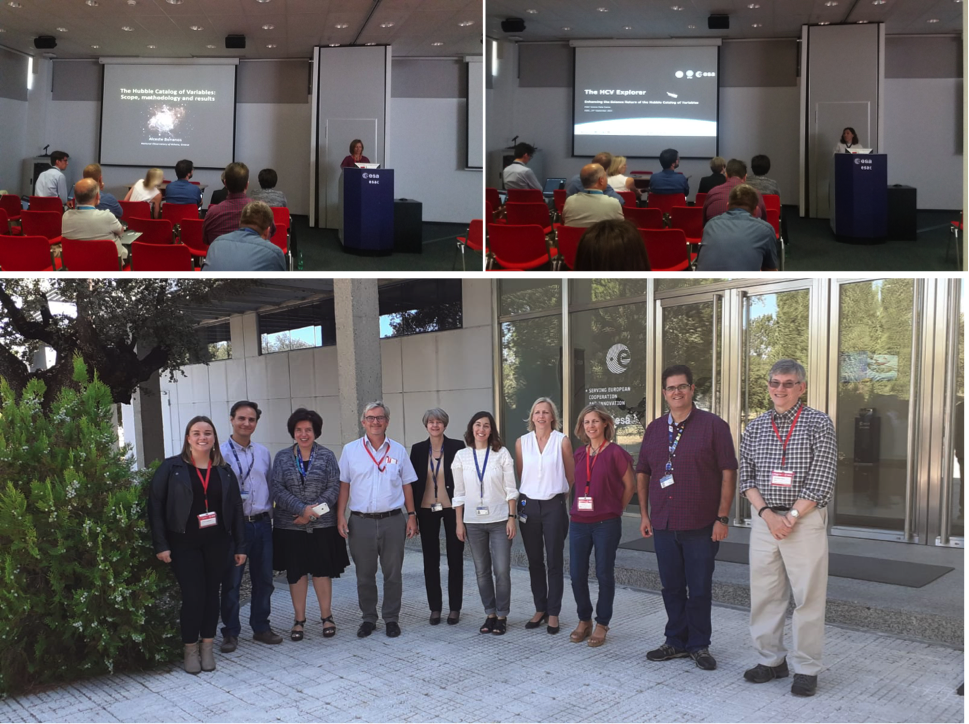 Images: ESA/ESDC
Images: ESA/ESDC

This long-time awaited release provides updated cosmological parameters, together with the likelihood code and other associated products.

The main topic discussed was the potential of an overarching Solar and Heliophysics Data Archive.
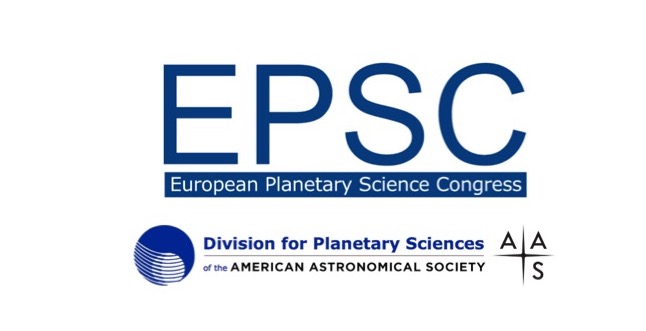
Recent developments in ESA planetary missions and the Planetary Science Archive were presented in the conference,
which also hosted a splinter session devoted to the retrieval and use of Rosetta archival data.

Both meetings took place in Groningen with strong participation of ESDC members, who presented recent work on the Gaia and Euclid archives, on the HCV Explorer and on ESASky and pyESASky.
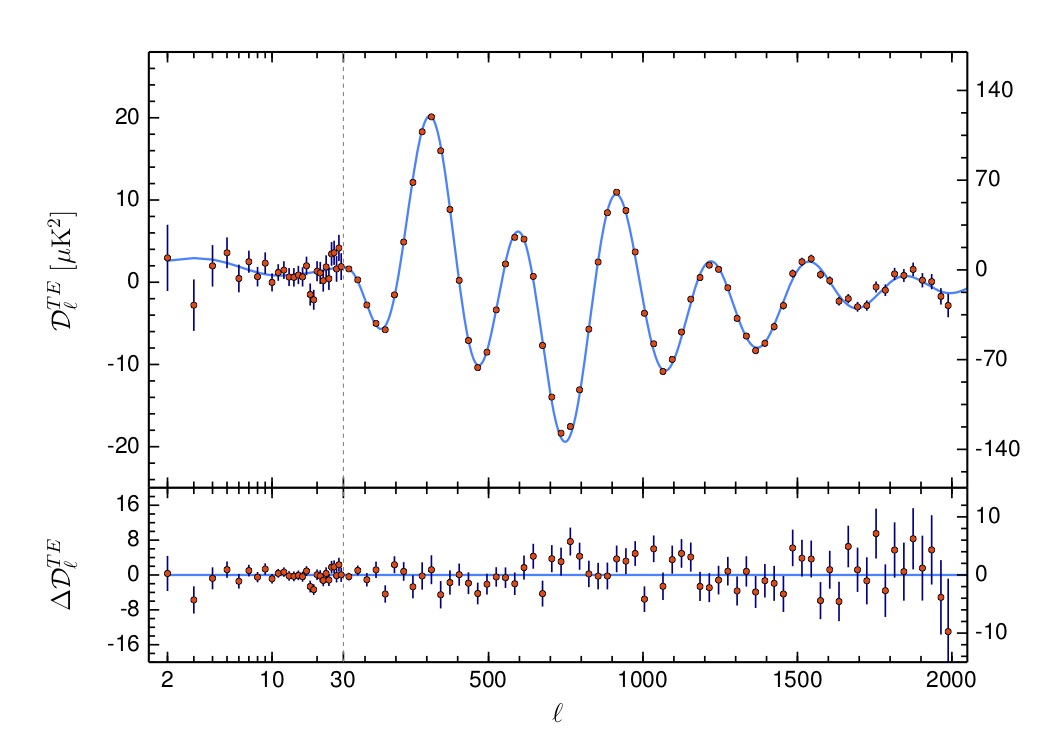
On 31 July 2019, the Planck Collaboration released via the Planck Legacy Archive (PLA)
a very long-awaited set of cosmology products.
This release consisted of updated cosmological parameters and associated Markov Chain Monte-Carlo simulations,
together with the likelihood code and associated baseline and extension files.
This completed the PR3 release, that started in July 2018 with the release of frequency, CMB and component maps, and time-ordered data.
At the same time, the Planck Collaboration submitted to Astronomy & Astrophysics the article “Planck 2018 results. V. CMB power spectra and likelihoods”.
This article describes how, using realistic simulations to model and correct for systematic effects,
the new Planck CMB likelihoods can take full advantage of the High Frequency Instrument polarization data,
providing new constraints on the epoch of re-ionization via the optical depth parameter.
In particular, a better model of the temperature-to-polarization leakage at high multipoles and a better calibration of the polarized channels
allows for an improvement on the constraints on the Lambda-CDM parameters by 20-30% when combining temperature and polarization data,
as compared with temperature data only from previous analyses.
Overall, the legacy Planck CMB likelihood provides a robust tool for constraining the cosmological model
and will be the reference for future CMB observations.
Image: Planck Collaboration
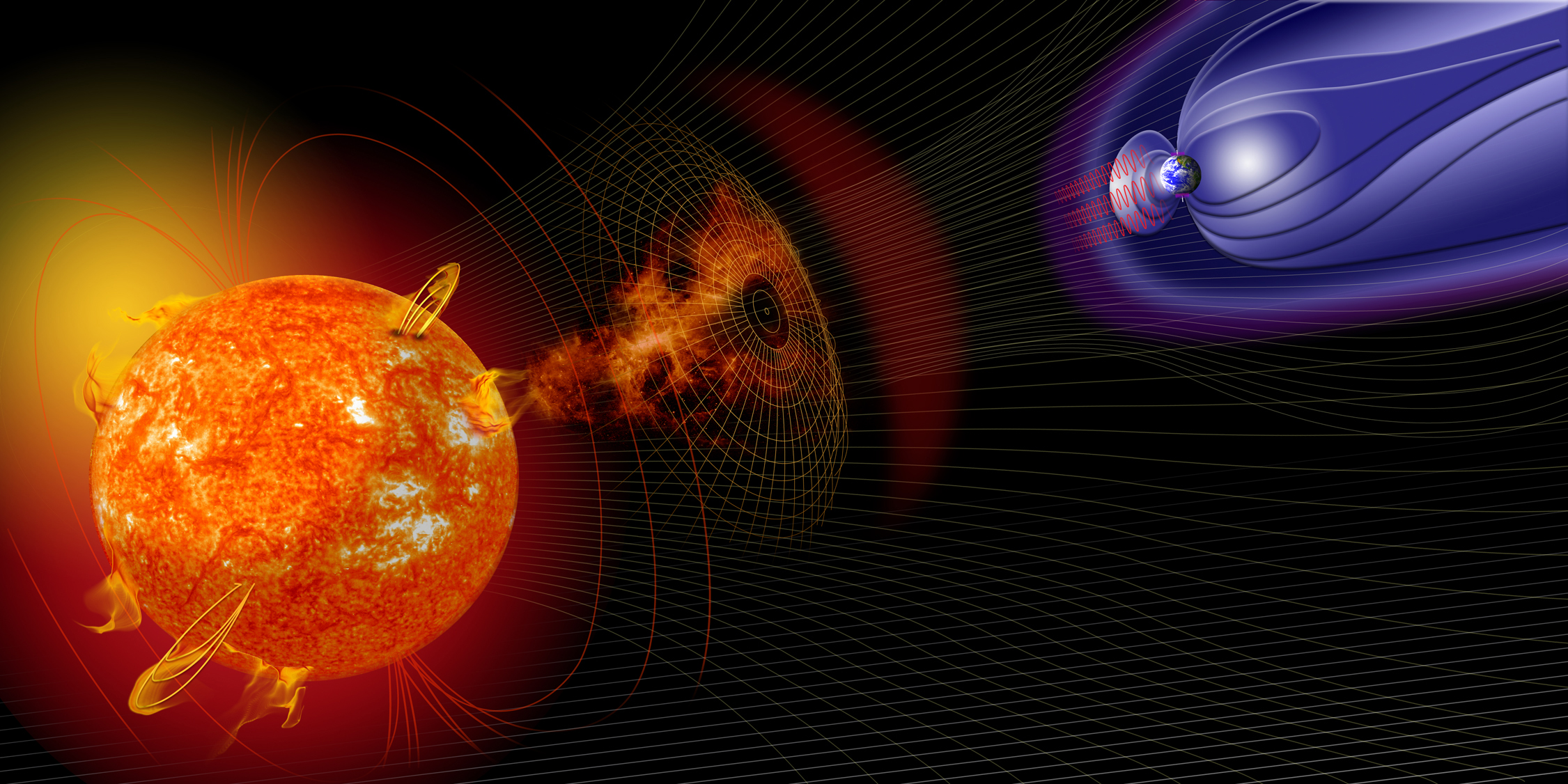
The Heliophysics Archives USer (HAUS) group held its fourth meeting at ETH, Zurich, on October 1-2, 2019.
This external advisory working group is composed of six experts from the following scientific themes:
helioseismology, solar atmosphere physics, solar and interplanetary transients, and Heliophysics particles and fields.
Nominated for two years, these members act as ambassadors to relay the opinion of the community in the usage of the ESA Heliophysics archives and related tools.
The rationale behind this group is of course to get feedback on what should be improved in the ESDC Heliophysics individual archives, but not only.
This user group will look at the big picture and help ESA building an overarching ESDC Solar and Heliophysics data archive.
Key topics include: data visualisation, content search, orbit visualisation, impact of solar transients in the Heliosphere
(a potential link with the Planetary Science Archive), and a common interface.
The main topic of this meeting was a discussion on which scientific cases the overarching archive should be based.
Image: NASA

The joint European Planetary Science Meeting and AAS Division of Planetary Science (DPS) meeting
took place in Geneva, Switzerland, from September 15 to 20, 2019, with more than 1700 participants.
ESAC and ESTEC scientists from ESA’s planetary science missions participated in the conference with several oral contributions and posters,
providing updates on the Mars Express and BepiColombo missions, and on the use of SPICE for ESA planetary missions.
ESDC scientists and engineers presented several posters and talks
reporting recent developments
and data deliveries
to the Planetary Science Archive (PSA),
including its GIS architecture
and the use of the SPARTA software to convert selected data from the RPC instrument onboard Rosetta from PDS3 to CDF format, common in Heliophysics.
A poster on the concept of a PDS4 writer that writes both data files and label files
was presented together with a Python prototype that is available in the ESDC github account.
There was as well a splinter session on digging into the Rosetta mission archive,
aiming at making attendees familiar and as autonomous as possible with archival data from this mission,
so that they could quickly carry out their own cometary science studies.
ESA’s SPICE service also offered a training session for scientists and engineers
who wanted to be introduced to this information system;
it consisted on a brief introduction and a hands-on application to a practical case.
Participants also had the chance to meet their ESA colleagues at the ESA booth,
where they could grab some of their favourite ESA goodies to take home.
Images: M. Taylor/L. O'Rourke/E. Grotheer/E. Baldwin/R. Docasal
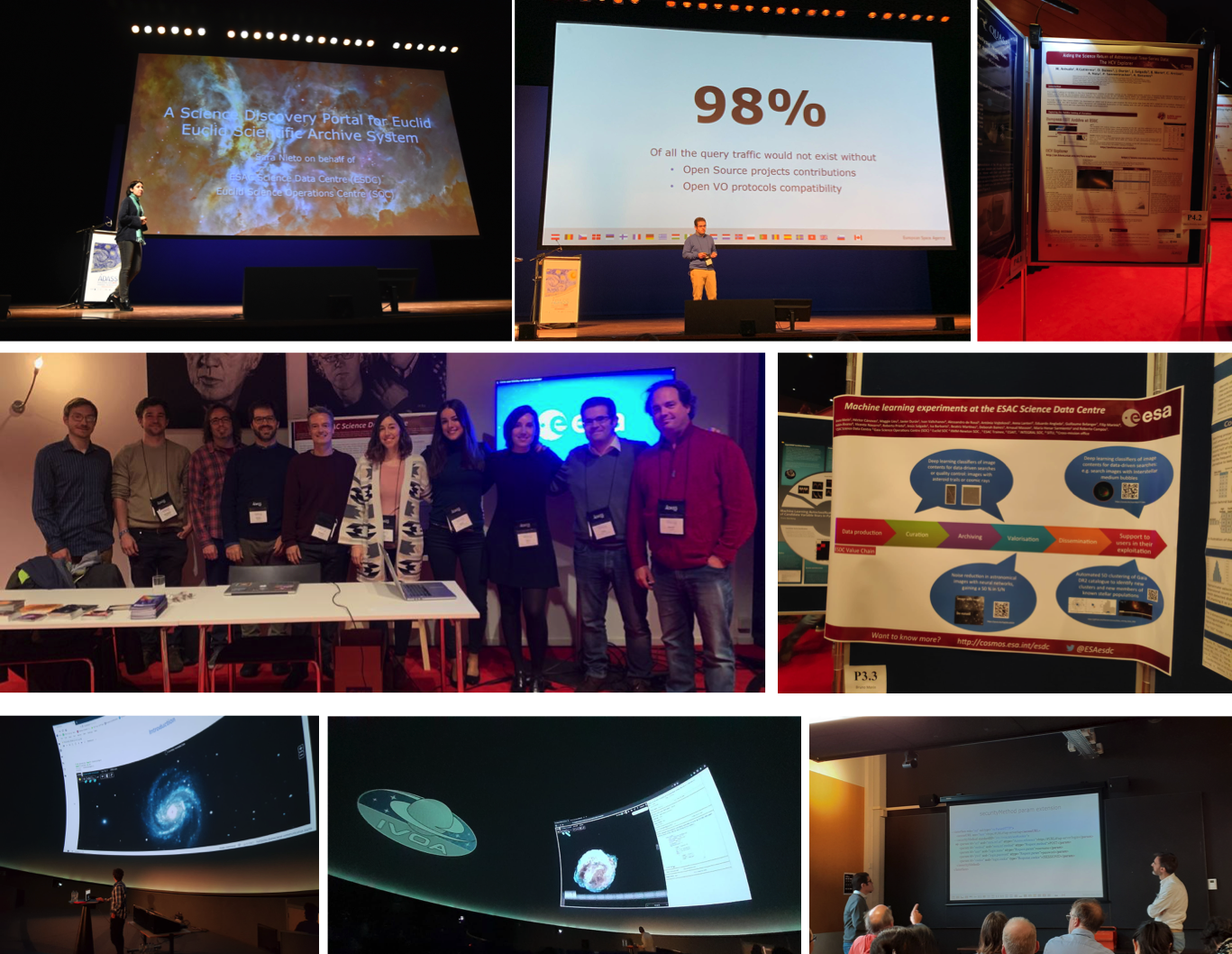
This year’s Astronomy Data Analysis Software and Systems (ADASS) meeting took place in Groningen, the Netherlands, from October 6 to 10, 2019.
It was followed by an Interoperability Meeting
of the International Virtual Observatory Alliance (IVOA) from October 11 to 13, 2019.
Key topics at ADASS were, among others: open data access, multi-wavelength data visualisation and discovery, software development and management, and data science challenges.
The ESDC participated in the conference with two invited talks
about the Euclid Archive System
and Gaia data dissemination,
held by Sara Nieto and Juan González, main developers of the Euclid and Gaia archives, respectively.
In addition, two posters were presented,
on time-series data visualisation for the HCV Explorer
and on machine learning initiatives at the ESDC.
Attendees also had the chance to talk to ESDC representatives and get a tailored demo of our services at the ESA booth.
At the subsequent IVOA meeting, ESDC members could share and discuss recent developments with colleagues from other institutions and data centres,
They presented work done on ESASky and pyESASky, the HCV Explorer and the Gaia Archive,
and participated in the debates about the technical standards that make the Virtual Observatory possible.
Images: ESA/ESDC & ADASS 2019